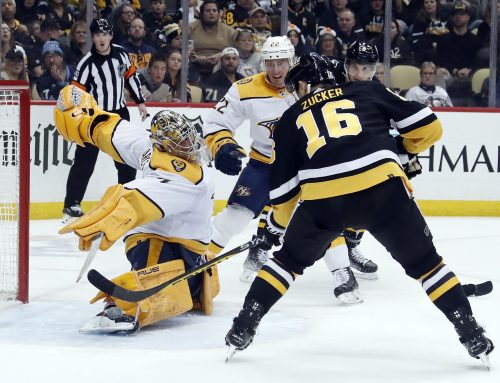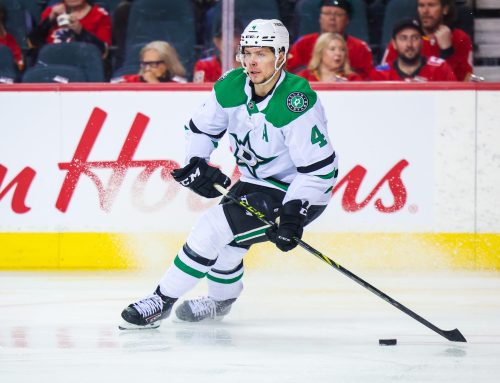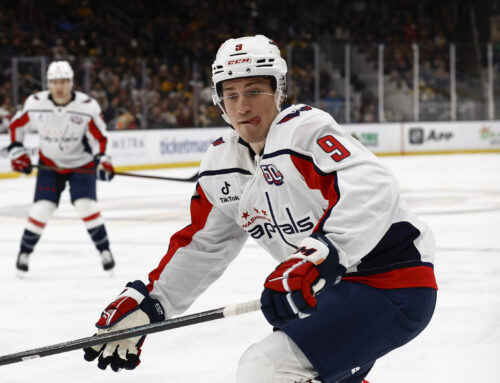
Eric Daoust rips into the Islanders for their recent cap trickery.
The New York Islanders have been a poorly run franchise for years. Many hockey fans have never seen this team enjoy a string of consecutive strong seasons during their lifetime. Their history of poor trades, signings and drafting is well-documented. They have given us glimpses of promise and even an occasional playoff appearance but have found themselves for the most part in the basement of the league. Meanwhile most of their high draft picks have either failed to deliver or found success elsewhere.
Recently the Islanders acquired the rights to holdout goaltender Tim Thomas. Since he was over 35 years of age when he signed his contract with Boston, his cap hit of $5 million counts whether he plays or not. Obviously this move was made for salary cap purposes as Thomas has no intention of joining the team.
According to Capgeek, the Islanders currently have a total team cap hit of $53 million. Having Thomas on the cap payroll (not actual payroll – his salary was suspended for not reporting) gives the team flexibility when it comes to selling some of their players for future assets while staying above the NHL's $44-million cap floor. Candidates to be moved include Lubomir Visnovsky ($5.6 million), Mark Streit ($4.1 million), Evgeny Nabokov ($2.75 million), Marty Reasoner ($1.35 million) and Brad Boyes ($1 million), among others.
There are many who will view this as a form of cap circumvention. The salary cap floor is in place for competitive balance and to give better opportunity for players to find jobs and earn a reasonable salary respective to their peers. But the Islanders are in fact using Thomas' absence and large cap hit to ice a roster that is inferior to the salary cap floor. The current roster has some talent including superstar John Tavares but the team still has major issues with a lack of quality depth and top-end talent.
This approach certainly hurts the team's ability to be competitive from year to year. Sure, the team could squeak into the top-eight in a given year but as stated already sustainable success is the real problem in Long Island. Using every trick available to keep spending as low as possible is not going to change that. Why would any top free agent sign with a team that will go out of its way to make sure it does not add a suitable supporting cast?
From a fan's perspective it has to be difficult to support this team, let alone buy a ticket. The team continues to struggle while so many other teams have found ways to become competitive again after hitting rock bottom. As a counter-example to the Islanders' method, the Florida Panthers acquired Tomas Fleischmann, Tomas Kopecky, Marcel Goc, Kris Versteeg, Brian Campbell, Ed Jovanovski and Jose Theodore during the summer of 2011 to reach the salary cap floor. This turned into a playoff appearance as the Panthers captured the Southeast division title. They have not enjoyed the same success so far this year but at least they tried to use their money intelligently to put a competitive roster on the ice.
It is worth noting that Thomas is just the beginning when it comes to the Islanders' "dead" cap space. Alexei Yashin, bought out in 2007, still counts for $2.2 million against the cap. In fact, he will continue to appear on the team's salary cap chart until 2015. Yashin signed a 10-year, $87.5 million contract back in 2001, one of many bad contracts that have plagued the organization for years.
Speaking of bad contracts, Rick Dipietro remains on the roster to this day and owns a $4.5 million cap hit until 2021. Looking past the terrible agreement, he simply cannot stay healthy and has only dressed for 49 games since 2008. His skills have obviously eroded after so many injuries and cannot be relied on for anything other than occupying a spot on the roster. This is another example of essentially dead cap allocation that does nothing to make the team better and gets in the way of improving the team.
In the end, it is surprising that this loophole exists in the new collective bargaining agreement. The two sides did make changes to the meaning of cap floor so that it does not include performance bonuses given to players in contracts. But they did not address the possibility of a guy like Thomas being used to lower team payroll despite his intentions being known before the lockout began. Given the benefits of having a salary cap floor, it makes no sense for any dead salary cap allocation that is not being paid in salary to contribute towards a team reaching this floor.
Previous posts from Eric Daoust:





 FLA
FLA EDM
EDM MIN
MIN DAL
DAL UTA
UTA VAN
VAN STL
STL TOR
TOR L.A
L.A S.J
S.J
